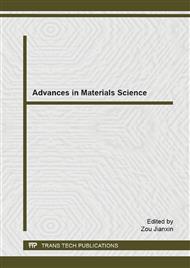p.819
p.824
p.829
p.834
p.838
p.843
p.848
p.853
p.858
Study on the Promotion Effect of Microwave-Metal Discharge on the Microwave Pyrolysis of Electronic Waste
Abstract:
This paper discussed the role of microwave-metal discharge on the microwave induced pyrolysis of electronic waste. Two kinds of waste printed circuit boards (WPCB) were selected as the representatives of electronic waste and their pyrolysis processes under both conventional and microwave heating schemes were studied comparatively to reveal the effect of metal discharge. The copper-clad laminated printed circuit board (PCB) is deficient in absorbing microwaves, leading to inefficient microwave pyrolysis of this kind of electronic waste. The discharge caused by introducing metalliferous materials with metal tips or corners in the electromagnetic fields can result in high local temperature and complement the deficiency in the microwave absorption. The pyrolytic process can be promoted greatly by the thermal effect of discharge in the beginning and the enhanced consequent wave-absorption capacity as a result of the generated pyrolytic coke.
Info:
Periodical:
Pages:
843-847
Citation:
Online since:
February 2015
Authors:
Keywords:
Price:
Сopyright:
© 2015 Trans Tech Publications Ltd. All Rights Reserved
Share:
Citation:


